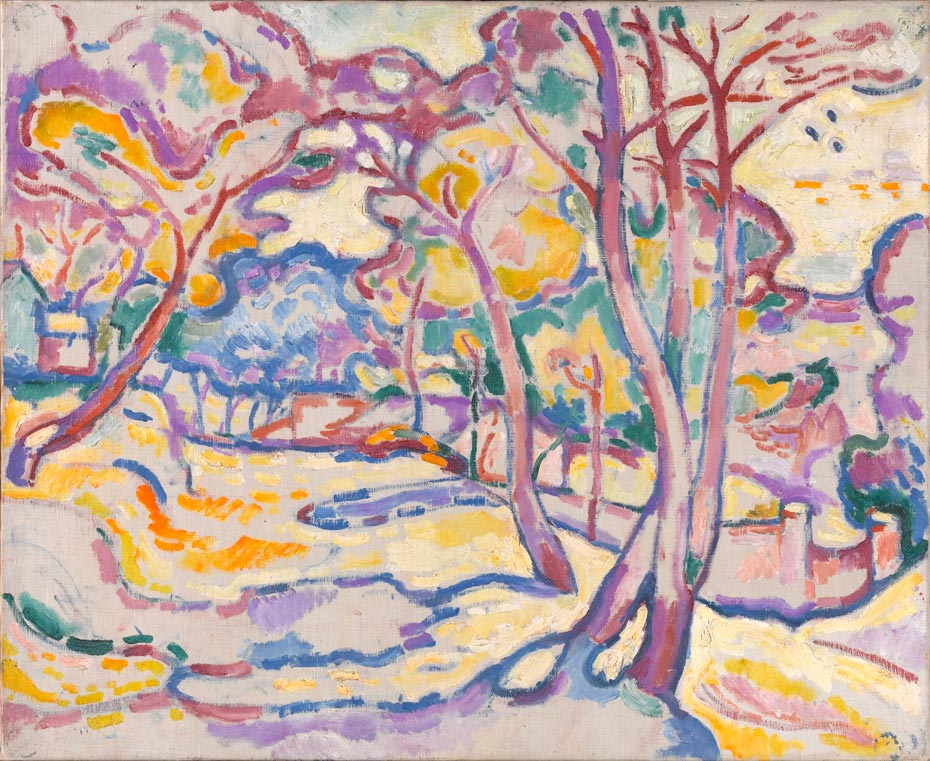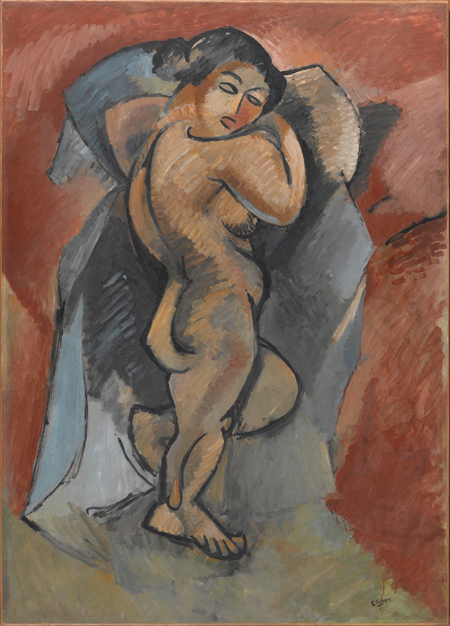Millie Walton marvels at the variety of the French master’s work, as a major new retrospective opens 50 years after his death
Standing in front of the sharp-edged, shining sliver shapes that comprise Frank Gehry’s Guggenheim in Bilbao, it’s difficult to think of a more appropriate building to house a retrospective of one of the founders of cubism. After all, if you’re familiar with Georges Braque, it’s no doubt for his complex paintings that aim to capture objects from multiple perspectives.
Though revolutionary at the time and arguably, still now, Cubism’s not the most friendly of artistic movements – it requires a somewhat mathematical eye. Fortunately, the Guggenheim’s exhibition introduces audiences to an artist connected to, but by no means defined by Cubism or his work with Pablo Picasso.
The foremost space is a room of juxtaposition. One wall is lined with a selection of the young artist’s glaringly bright paintings influenced by Fauvists such as Henri Matisse whilst the other documents Braque’s journey to Cubism. The former have a hallucinogenic quality that makes them seem quite otherworldly. ‘L’Estaque’ (1906), for example, depicts two small shadowy figures walking along a pathway edged by thin, sloping trees. It reminds me of a scene from a Dr. Seuss book, although the colours are warmer and the shapes less stark.

Photo © Philippe Migeat – Centre Pompidou, MNAM-CCI/Dist. RMN-GP
I found myself most captivated, however, by the seemingly simplest of creations: one of Braque’s papier colles (that’s paper collages to you and I), ‘Guitarra’ (1912). Stripped bare of colour, but for a strip of wallpaper mimicking the appearance of wood, it’s much lighter and peaceful to view. It comes as a well-placed break from the intensity of the former movements and stylistically functions as the perfect lead into Braque’s illustrations for Hesiod’s ‘Theogony’. These drawings maintain the bareness but here the pencil lines are entangled in webs forming bizarre mythological creatures and figures in an imaginative reimagining of Roman art work – a surprising pursuit for the master of Cubism.The classical theme is loosely continued with a striking pair of female figures, ‘Canephores’ (1922), standing side by side on two large canvases. These generously proportioned women demonstrate strength rather than vulnerability with dark skin and exposed muscular stomachs. The rippling lines capture the movement of their bodies as they carry their baskets balanced on one shoulder.
“Staring at the flowing colours and swooping shapes it’s easy to imagine Braque’s paintbrush moving frantically across the canvas”

The third room exposes a more vulnerable side to Braque. Influenced by war, loss and his own personal isolation, morbid symbols of skulls are forefront, along with dark, solitary figures, their backs always turned from the viewer – this is the work of a man who once described art as “a wound turned into the light”. Though interesting from a contextual point of view these pieces lack the sophistication of previous works betraying an occupied mind and wandering inspiration.
Braque’s birds are the highlight of the next space, symbolising spirituality and liberty. ‘The Black Bird’ and ‘The White Bird’ is the most obviously eye catching because of its light colours and sheer scale, but it was ‘The Birds in Flight’ that I found myself returning to. Staring at the flowing colours and swooping shapes it’s easy to imagine Braque’s paintbrush moving frantically across the canvas, desperately trying to capture the movement of the wings, the air.
Braque’s series of late landscapes, however, leave the most lasting impression. Displayed in a wide, open circular room, the paintings and the viewer are dwarfed by the vastness of the space. I was fortunate enough to experience the space alone, intensifying the powerful sense of solitude – it’s a room that demands quietness and contemplation.
The exhibition concludes with a display of Braque’s ballet costumes and set designs. Though less immersive than the rest of his work, it functions as a tribute to the artist’s diverse talent and varied body of work. In the words of Juan Ignacio Vidarte, the Director of the Guggenheim Bilbao, “What makes exhibitions like these so interesting are the surprises.”
Georges Braque at the Guggenheim Bilbao runs until 21 September. For more info, click HERE




